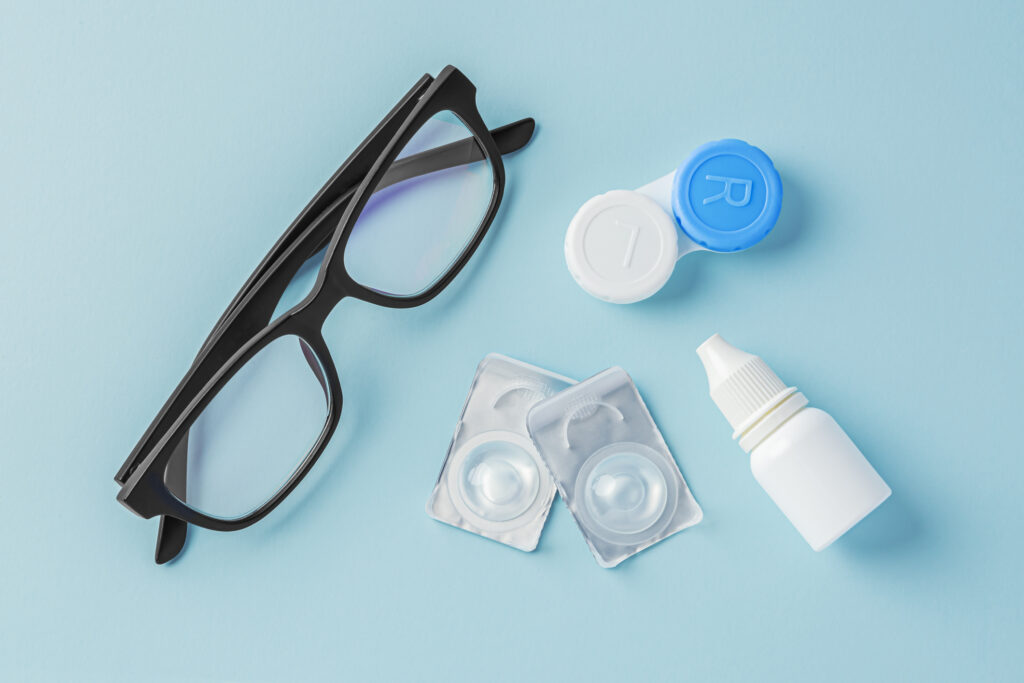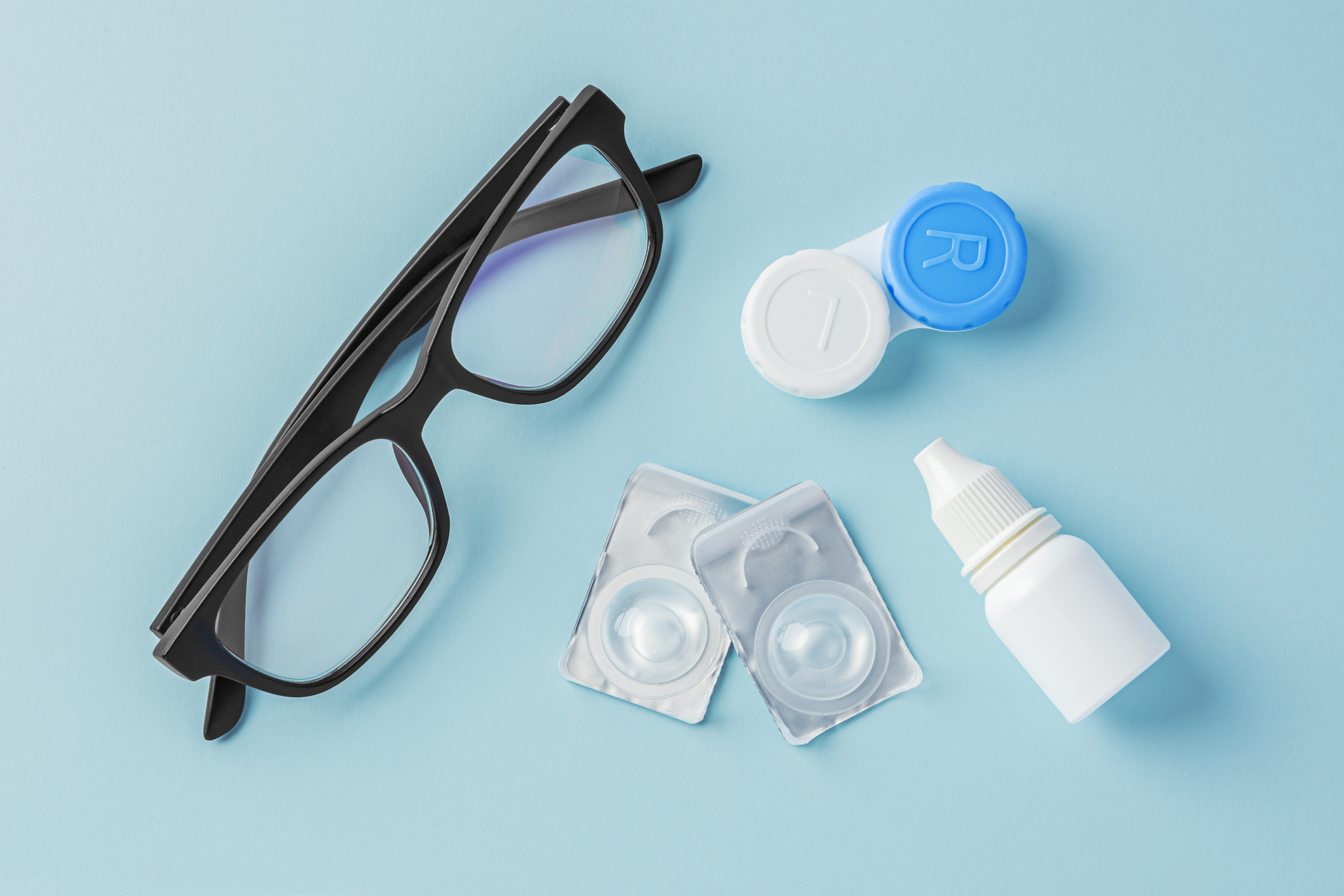
Myopia, or nearsightedness, is a growing concern for children here in Canada. After myopia first develops in children, causing blurred vision for things across the room or further, it tends to get progressively worse every few to several months, requiring regular changes in glasses prescription. Myopia is more concerning than just a need for stronger glasses over time, though —progressive myopia increases the risk of eye diseases such as retinal detachment, myopic maculopathy, glaucoma, and cataracts which can occur later in life.1 As myopia rates rise worldwide, with an estimated 50% of the global population expected to be myopic by 2050,2 managing this condition has become a priority in eye care.
Fortunately, effective myopia management strategies exist that go beyond simple vision correction. These treatment options, widely available here in Canada, aim to slow myopia progression and protect long-term eye health.
The Canadian Association of Optometrists (CAO) Recommendations
The Canadian Association of Optometrists (CAO) recognizes myopia as a significant public health issue and advocates for early intervention. The CAO emphasizes that Optometrists play a critical role in identifying children at risk of developing myopia and providing evidence-based treatment to slow its progression.3
The CAO recommends that all children undergo routine eye exams to detect early signs of myopia. These exams should assess risk factors such as family history, current refractive error, and visual habits. The association supports the use of myopia control treatments, including specialized spectacle lenses, contact lenses, and atropine eye drops, as standard care for myopic children.3
Additionally, the CAO highlights the importance of educating parents on lifestyle modifications that can help delay the onset of myopia, such as increasing outdoor activity and reducing prolonged screen time. Optometrists across Canada are encouraged to offer individualized treatment plans that incorporate both clinical interventions and lifestyle recommendations.3
Myopia Management Options in Canada
Myopia management strategies fall into three main categories:
- Specialized Spectacle Lenses
- Specialized Contact Lenses
- Pharmaceutical Treatments
Each option is evidence-based and has been shown to slow myopia progression to varying degrees. Choosing the right treatment depends on factors that your child’s Optometrist can discuss with you, like a child’s age, lifestyle, myopia severity, and eye health.
1. Specialized Spectacle Lenses for Myopia Control
Unlike standard single-vision glasses that only correct blurry vision, myopia control spectacle lenses are designed to correct blurry vision and slow the progression of myopia. Several options are available in Canada, including:
- Essilor® Stellest®
- Hoya MiYOSMART®
- MiSight® Spectacle Lenses
- Zeiss MyoCare®
These lenses use advanced optical designs, such as small (~1mm diameter) lenslets or even smaller diffusers which are incorporated almost invisibly across the overall lens, to alter the way light enters the eye. This special design helps regulate eye growth and can slow myopia progression by 50% (at least half) or more.4-6 Not all options are available at all Optometrists – your child’s Optometrist will be able to tell you more.
Spectacle lenses are a great option for younger children or those not yet ready for contact lenses. Parents can also consider factors such as lens durability, comfort, and availability when selecting myopia control glasses. Many of these lenses are designed with impact-resistant materials, making them suitable and highly safe for active children. Additionally, regular check-ups with an Optometrist will help monitor their effectiveness and adjust prescriptions as needed. You can learn more about the different spectacle lenses for myopia control available here in Canada in the article Spectacles for Myopia Management in Canada, or for a comprehensive guide and research evidence you can read All about eye glasses for myopia control on MyKidsVision.org.
2. Soft Contact Lenses for Myopia Management
Soft contact lenses for myopia control are another effective treatment. Unlike regular contact lenses, these are designed to give children clear vision, and also include additional optical zones surrounding the central portion of the lens, that manipulate peripheral light focus, reducing the stimulus for excessive eye growth which occurs in myopia.
In Canada, two soft contact lenses are Health Canada-approved for myopia control:
- MiSight® 1 day
- Acuvue® Abiliti™ 1-Day
- Visioneering Technologies NaturalVue® Multifocal 1 Day
These lenses have been designed specifically and proven to slow myopia progression by over 50% (at least half).7-9 They offer the advantage of clear vision without the inconvenience of wearing glasses, have a very high safety profile, and are well-suited for active children.
Soft contact lenses are a good option for both children and teenagers who prefer not to wear glasses. In fact, children (8-12 years) get the same quality of life improvements from wearing contact lenses as teenagers do!10 Daily disposable lenses greatly reduce the risk of eye infections and require minimal maintenance, making them a convenient choice for many families.
There are different volumes of evidence supporting each of these contact lens types. You can learn more about the different contact lenses for myopia control available in Canada in the article Soft Contact Lenses for Myopia Management in Canada, or for a comprehensive guide and research evidence you can read All about contact lenses on MyKidsVision.org.
3. Orthokeratology (Ortho-K) Lenses
Orthokeratology, commonly known as Ortho-K, is another approach to myopia management using specially designed rigid contact lenses worn overnight. These lenses gently reshape the cornea while sleeping, and are removed upon waking, allowing for clear vision throughout the day without the need for additional glasses or contact lenses.
Research suggests Ortho-K can slow myopia progression by about 50%. While appearing to be just as effective as the specialized spectacle and soft contact lens options, it provides the additional benefit of freedom from daytime eyewear.11,12 Consistent overnight wear is required, and the safety profile is high provided that proper contact lens and hand hygiene is observed.
Ortho-K may be most useful for children involved in sports or other activities where glasses or daytime contact lenses may be inconvenient, such as swimming and water sports. These lenses must be custom-fitted by an Optometrist, so require a little more time at the initial fitting process to ensure success. After this, regular follow-ups to ensure a proper fit and ongoing effectiveness are similar as for soft contact lenses.
You can learn more about Ortho-k for myopia control in Canada in the article Ortho-k for Myopia Management in Canada, or for a comprehensive guide and research evidence you can read Ortho-k for myopia control on MyKidsVision.org.
4. Atropine Eye Drops
Atropine eye drops, used for many decades to diagnose and treat other eye conditions, have been found to slow myopia progression. Low-concentration atropine (typically 0.01% to 0.05%) is used for myopia control, and depending on the concentration used, can reduce myopia progression by around 50% (around half).13
While atropine does not correct vision and must be used alongside glasses or contact lenses, it is a promising option for children who may not be ready for specialized eyewear or where these are not available. Atropine is available in Canada through Optometrists and ophthalmologists but may require a custom prescription, as it is not yet commercially available in pre-formulated low concentrations.
Recent research is also exploring the long-term effects of atropine treatment, with ongoing studies aiming to determine the optimal dosage for maximum efficacy while minimizing side effects which can occur in some children, such as light sensitivity (squinting in brighter light) and enlarged pupils (the black window into the eye).
You can read more about atropine for myopia control in Canada in the article Atropine for Myopia Management in Canada, or for a comprehensive guide and research evidence you can read All about atropine on MyKidsVision.org.
Choosing the Right Myopia Treatment for Your Child
Selecting the best myopia management strategy is best done in collaboration with your child’s Optometrist, as it will depend on several factors:
- Age and Maturity: Spectacle lenses are a simple and easy option for young children, while contact lenses require more responsibility for handling and hygiene.
- Your child’s prescription: the level of myopia and astigmatism (if present) can influence suitability for some treatments but doesn’t appear to impact which works best to slow myopia.
- Lifestyle: Active children may prefer contact lenses or Ortho-K over glasses.
- Parental Preferences and Budget: Some treatments may not be covered by insurance, so cost considerations can be important.
Many Canadian Optometrists offer comprehensive myopia management programs, which assess a child’s myopia progression and recommend the most suitable treatment options. Regular eye exams are crucial to track changes in your child’s vision, and adjust treatment plans as needed.
It is also important for parents to be proactive in incorporating lifestyle habits that support myopia management and healthy vision, such as increasing time spent outdoors and aiming to limit leisure (non-school) screen time to less than two hours per day. Studies show that spending at least two hours per day outside – even if just walking or playing – can help delay the development of myopia, providing a simple and effective way to protect kids’ vision.
What can you do next?
When myopia first develops in children, it typically gets worse every few to several months. Managing myopia in children is about more than just prescribing stronger and stronger glasses to correct this. With modern myopia control treatments, it is possible to slow the progression of myopia, giving children more stable vision now, between their eye exams, as well as reducing the risk of serious eye health complications later in life.
If your child has myopia, consult an Optometrist about available treatment options. Early intervention makes a significant difference in preserving vision and promoting long-term eye health.
References:
- Bullimore MA, Ritchey ER, Shah S, Leveziel N, Bourne RRA, Flitcroft DI. The Risks and Benefits of Myopia Control. Ophthalmology. 2021 Nov;128(11):1561-1579.
- Holden BA, Fricke TR, Wilson DA, Jong M, Naidoo KS, Sankaridurg P, Wong TY, Naduvilath TJ, Resnikoff S. Global Prevalence of Myopia and High Myopia and Temporal Trends from 2000 through 2050. Ophthalmology. 2016 May;123(5):1036-42.
- Canadian Association of Optometrists. CAO position statement on myopia management. Ottawa (ON): Canadian Association of Optometrists; 2022. Available from: https://opto.ca
- Bao J, Huang Y, Li X, Yang A, Zhou F, Wu J, Wang C, Li Y, Lim EW, Spiegel DP, Drobe B, Chen H. Spectacle Lenses With Aspherical Lenslets for Myopia Control vs Single-Vision Spectacle Lenses: A Randomized Clinical Trial. JAMA Ophthalmol. 2022 May 1;140(5):472-478.
- Lam CSY, Tang WC, Tse DY, Lee RPK, Chun RKM, Hasegawa K, Qi H, Hatanaka T, To CH. Defocus Incorporated Multiple Segments (DIMS) spectacle lenses slow myopia progression: a 2-year randomised clinical trial. Br J Ophthalmol. 2020;104:363-368.
- Rappon J, Chung C, Young G, Hunt C, Neitz J, Neitz M, Chalberg T. Control of myopia using diffusion optics spectacle lenses: 12-month results of a randomised controlled, efficacy and safety study (CYPRESS). Br J Ophthalmol. 2022 Sep 1:bjophthalmol-2021-321005.
- Chamberlain P, Hammond DS, Arumugam B, Bradley A. Six-year cumulative treatment effect and treatment efficacy of a dual focus myopia control contact lens. Ophthalmic Physiol Opt. 2024 Jan;44(1):199-205.
- Cheng X, Xu J, Brennan NA. Randomized Trial of Soft Contact Lenses with Novel Ring Focus for Controlling Myopia Progression. Ophthalmol Sci. 2022 Oct 18;3(1):100232.
- Sun Y, Xu F, Zhang T, Liu M, Wang D, Chen Y, Liu Q. Orthokeratology to control myopia progression: a meta-analysis. PLoS One. 2015 Apr 9;10(4):e0124535.
- Cho P, Cheung SW. Protective Role of Orthokeratology in Reducing Risk of Rapid Axial Elongation: A Reanalysis of Data From the ROMIO and TO-SEE Studies. Invest Ophthalmol Vis Sci. 2017 Mar 1;58(3):1411-1416
- Yam JC, Jiang Y, Tang SM, Law AKP, Chan JJ, Wong E, Ko ST, Young AL, Tham CC, Chen LJ, Pang CP. Low-Concentration Atropine for Myopia Progression (LAMP) Study: A Randomized, Double-Blinded, Placebo-Controlled Trial of 0.05%, 0.025%, and 0.01% Atropine Eye Drops in Myopia Control. Ophthalmology. 2019 Jan;126(1):113-124.



